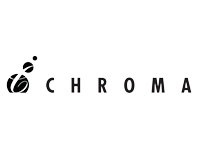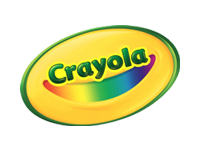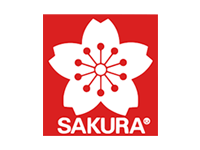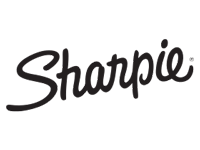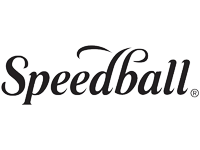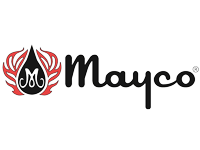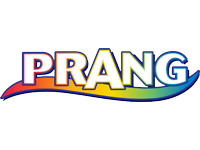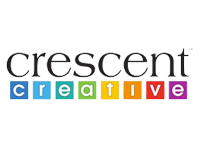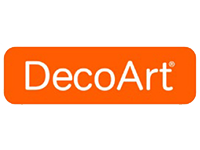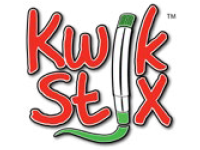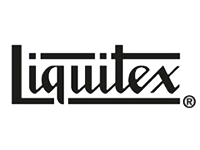
A Great Art Lesson Starts with a Great Plan
Lesson Plans to Support National Core Art Standards
As part of our unwavering commitment to support art educators, we’ve brought together 19 exciting new art lesson plans. Together, they span a variety of mediums, and are adaptable for any skill level.
Ceramic Ink Patterned Wall-hangings
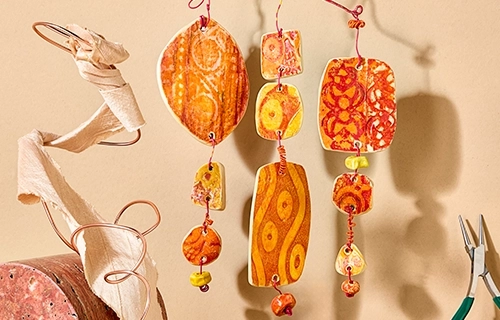
Color, form, and design communicate meaning. They also connect the viewer with artists including Ming Fay, Alexander Calder, Carolina Sardi, and Monica Radhoff-Troll’s “Last Day of Icarus.” Using AMACO® inks, clay, rollers and tools, students can layer color, pattern, and design to create bright hanging ceramic tiles in a range of color and line intensity.
Learn MoreHandmade Paper Cloud Cards
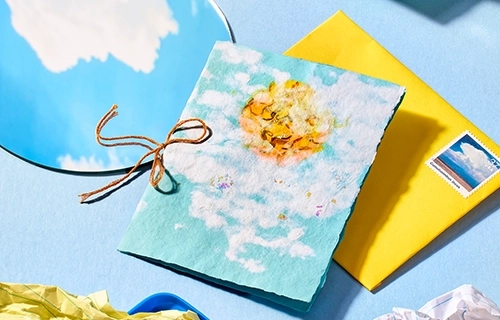
Papermaking is an ancient art form dating back over 2,000 years to ancient China. Recycled fishing nets, mulberry bark, hemp, and bamboo were some of the materials used to create paper for a variety of purposes including government and other important documents of the time. Today, handmade papermaking continues the practice of recycling various materials to create beautiful works of art. Handmade paper cards made from recycled paper can also show respect for the environment.
Learn MoreMetallic, Iridescent and Fluorescent! Oh My!
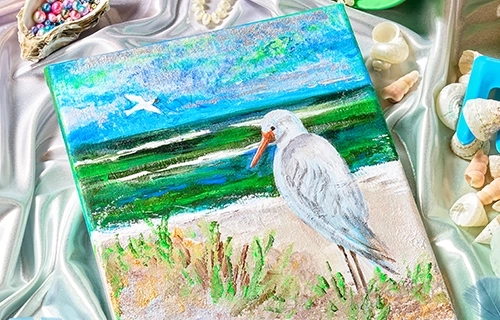
Students will be challenged to capture the brilliance and shimmer of the Liquitex® Iridescent, Metallic, and Fluorescent Acrylics by creating a “seascape painting” depicting a shoreline bird or animal as a subject. The result will be a work of art that is “over the top” with color effects! The lesson also enables students to see the relationships and applications of art to the fields of science, art history, and history.
Learn MoreAll Psyched Out
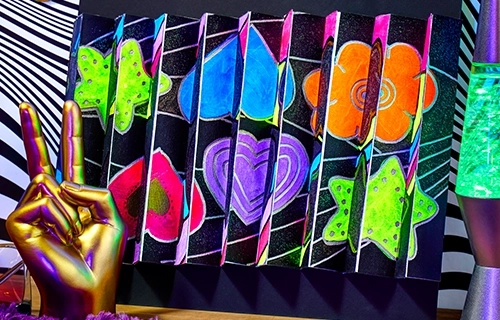
“The aesthetic of most psychedelic art created during the 1960s counterculture movement is so distinct and iconic that even those who weren’t alive at that time can identify it.” –Amelia Walsh. Imagery and symbolism depicting “love,” “peace,” and “freedom” were signs of the time. Seen in poster art, record albums, and clothing, these images have become part of our history. Students will utilize these images to create their own “psyched out” work of art.
Learn MoreNeon Northern Lights

Ribbons of green, blue, and violet light, better known as the Northern Lights or Aurora Borealis, have captivated humans since the dawn of time. In many northern cultures, stories or folklore have been created to help understand this amazing natural phenomenon. Students will use Crayola® Neon Crayons, permanent markers, and Premier Tempera paint on Crayola Construction Paper to create their own version of the Neon Northern Lights.
Learn MoreA Perfect Match

In this project, students will design images on tiles to be used in a version of a favorite childhood activity, a match/memory game. A set of original images will be created using pencils and markers on Crescent® 215 Hot Press Illustration Board. When this phase is completed, the images will be duplicated to create a second tile. These images can be grouped in themes such as historical figures, species of butterflies, farm animals, landmarks, or simply a fun collection of interesting characters.
Learn MoreOrganic Radial Abstractions
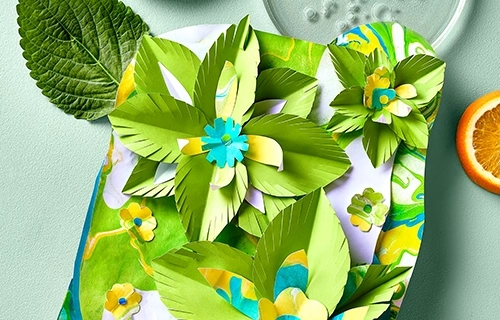
Hydro dipping, or water transfer printing, involves transferring floating pigments onto paper using thickened water. This technique, with origins in the ancient Japanese art of Suminagashi, dates back over 2,000 years. In this project, students will explore hydro dipping using DecoArt® Water Marbling materials to create unique marbled designs and experience a historic art form.
Learn MoreGroovy Pet Portraits

In this art project, students will use Jack Richeson™ fluorescent and metallic Tempera Cakes to craft vibrant pet or animal portraits, highlighting the animals’ unique personalities. By sketching, planning, and mastering different techniques, they will layer translucent paints to develop distinctive textures. The incorporation of unconventional colors and symbolic elements will enhance their portraits, offering a fresh perspective on the subject’s character and traits.
Learn MoreDoin' What Comes Naturally!
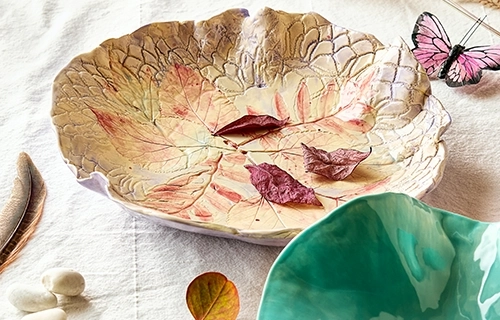
Ahhh, nature! We can make connections beginning with the soil, or clay in this instance. Dating back to prehistoric times, pottery has been a basic utilitarian art form. This lesson makes even more of a connection with nature, celebrating those things we find in nature and using them to make a vessel that is “earthly” in its appearance.
Learn MoreThiebaud's Tasty Textures
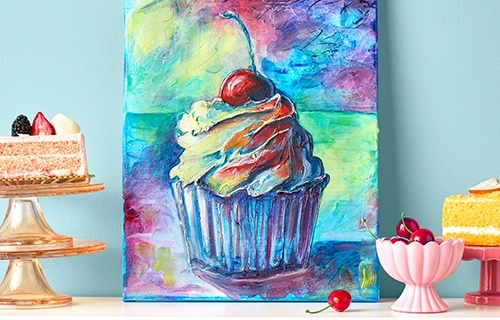
Texture, a key but often overlooked element of art, helps create a sense of tactility that may be actual or implied. There are many ways to add texture to 2D artwork, and learning to utilize different mediums can bring your paintings to a literal new level. Wayne Thiebaud’s iconic themes and masterful use of impasto techniques are great inspiration for designing a sweet textured treat that is too good to eat!
Learn MoreCollaging Patterned Paper Fashion
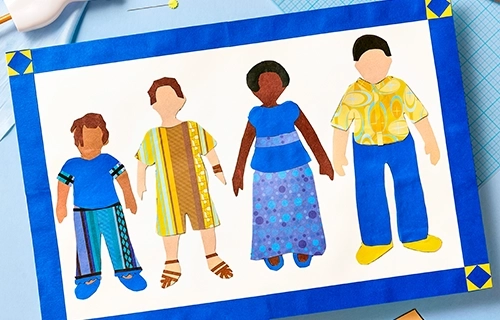
In this elementary art lesson, students explore global and local cultures through fashion design. They use stencils and colorful patterned papers to assemble clothing collages, incorporating diverse textures and designs inspired by many traditions. Each student selects Roylco® papers to represent different cultural influences, then cuts and pastes them into unique clothing designs, creating a fashion collection fit for a runway.
Learn MoreCapture the Wind
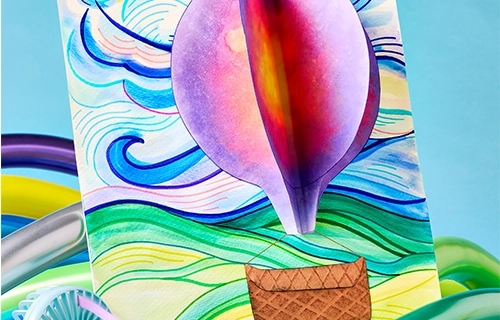
Capturing the movement of wind in artwork is certainly challenging, because wind itself is not visible. You can only feel its effect and see its force on objects. Repeating elements, using directional and expressive brushwork, and contrasting warm with cool colors are all effective ways to create the illusion of wind in a composition. This project uses simple materials from Prang® in innovative ways, which stretches both creative skills AND art room budgets!
Learn More“Creative” Versatile Abstract
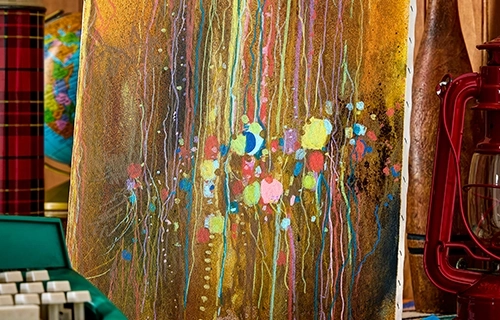
This lesson demonstrates that when creating an artwork, it isn’t necessary to use just one medium. Changing mediums allows the artist to explore possibilities and add variety. New Sharpie® Creative Markers work very well over the rich body and color of the Sax® Acrylic Paint on canvas. The high quality of the Sharpie Creative Markers and the richly colored Sax Acrylics will excite students to experiment, discover, and create wonderful paintings while honing their artistic abilities.
Learn MoreLayered Portraits

Color, form, and design are used to communicate meaning and connect with the viewer. Observe artists including Francis Picabia, Miss Chelove, Parmigianino, and Swoons. Using Sakura® Pen-Touch, Koi Watercolors, Cray-pas, Gelly Roll Pens, and Pigma Micron Pens, students can layer text and images to create expressive portraits that range in color and line intensity.
Learn MoreLegendary Sunset Landscapes
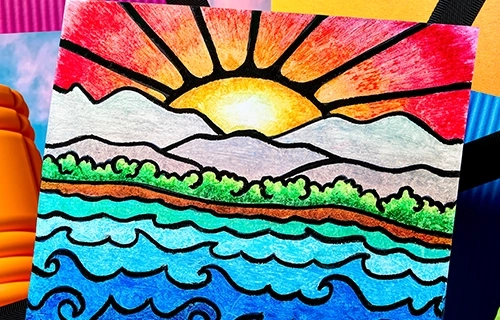
Nature and landscapes have inspired artists since the beginning of time. Landscapes allow viewers to see places they have never visited or be transported back to a place full of memories. Robin Mead is an artist who does just that by creating whimsical landscapes with bright, blended colors. Using Sakura® Cray-Pas® Oil Pastels, students will create their own stylized landscape inspired by the work of Robin Mead.
Learn MoreFluttering Feathers
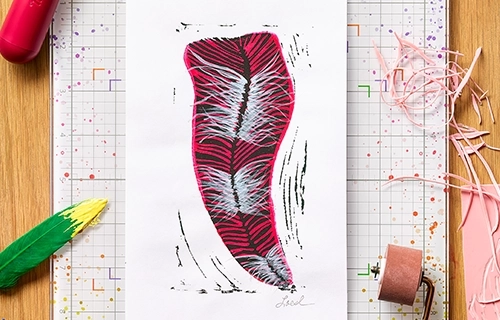
Reduction block printing is a printing technique utilized by Pablo Picasso and a number of contemporary artists. It is a challenging and exciting process, in that the layers of color are prepared by recutting the same print block (Speedball® Speedy-Carve Block) after each printing, creating a special series of prints that cannot be reprinted. In this adapted lesson plan, students will create a unique feather design using the reduction print technique.
Learn MoreMatisse Cut-Outs in Book Form
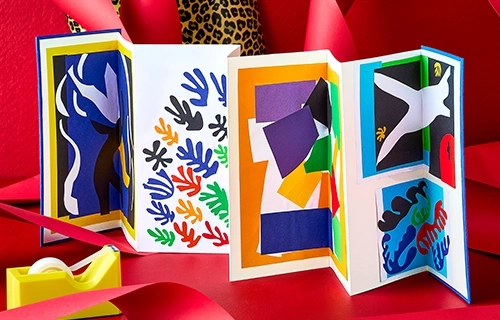
In this lesson plan, students will study Matisse’s artwork, particularly his Cut-Outs created during the last period of his life. They will use these Cut-Out artworks as inspiration for original art, and/or reproduce them to better understand and appreciate how they were created. Using simple tools—scissors, Sax® Colored Art Paper and glue—they will create an accordion book, filled with artwork based on the Cut-Outs.
Learn MoreCommunity Succulent Garden

In this lesson, students will use air-drying Sax® Paper Based Clay to create a community succulent garden. Students will research the genus and species of various succulents while noting their colors and forms. Students will work together on details and planning while re-creating this calming small environment.
Learn MoreNature Is a Painter
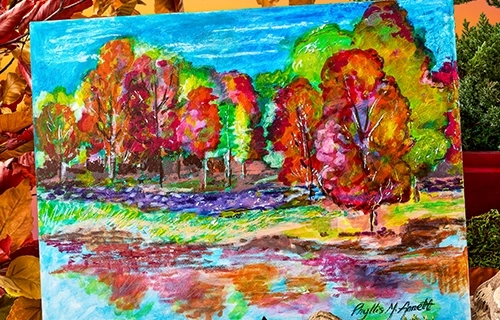
Direct students to create an autumn landscape ablaze with color using Tempera Paint Kwik Stix® Global and Primary colors. The inspiration for this lesson comes from the Fauvism movement because of the bright colors, strange shapes, and emotional brush strokes. This lesson will focus on Arborology sketches, art history, painting techniques, and experimental finds, all appropriate for Kwix Stix use!
Learn More Student Art Contests
Student Art ContestsA new contest and winner every month!
Student Art Contest
Learn MorePrize includes:
- $250 merchandise credit each for student and their teacher
- Artwork featured on our website and across social media




